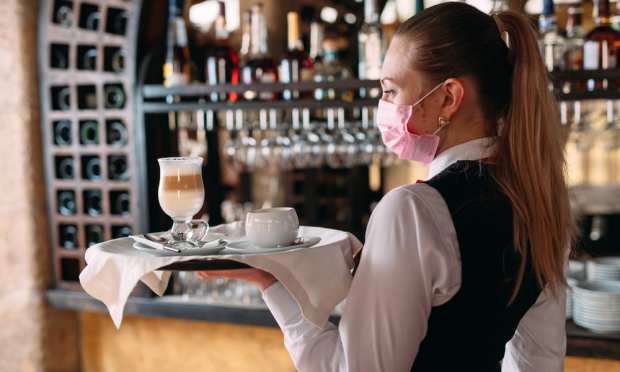The Unappetizing Future Restaurants Face

While there have been literally thousands of questions raised and debated in the last several weeks as the world has worked overtime to determine how to respond to the COVID-19 pandemic, there are two that tend to come up most often:
When is this going to be over?
And what will the world be like when it is over?
And while there are no concrete or detailed answers yet, a consensus is starting to emerge about the direction in which things are headed. For the first question, there will probably not be a single discrete point when a switch is thrown and everything resets to the way it was on February 29. Experts agree that it’s far more likely there will be a gradual phasing-in of things that were rapidly switched off, as consumer confidence gradually rebuilds over time.
As for the second question, the answer is equally vague: No one knows exactly what the world will be like when this is over, but at this point, there is almost universal agreement that what emerges will be rather different than what came before it.
But as of this week, some more concrete details are starting to emerge about what that different world will look like when the era of social distancing starts to ebb away – care of California Governor Gavin Newsom, who spoke to reporters about the post-shelter-in-place world, when consumers will be formally allowed to leave their homes and “ultimately get us back to that sense of normalcy that I know everybody watching so desperately looks forward to.
But “normal,” even Newsom conceded, will be a relative term for a while, and will likely feel quite a bit weird. In fact, he told the crowd, until either a vaccine is developed or herd immunity is established, “normal” is likely to be “anything but.”
Retailers, he noted, will have to redesign their processes and procedures to re-open, school schedules may need to be restructured and events will likely have to remain smaller and more constrained than has been the norm.
“You may be having dinner with a waiter wearing gloves, maybe a face mask, a dinner where the menu is disposable, where half of the tables in that restaurant no longer appear, where your temperature is checked before you walk into the establishment,” Newsom noted.
Sounds delightful. And it also brings up a lot of interesting side questions – like, is it really a public health boon to have waiters doing temperature checks and handling thermometers that have just been in contact with other people? Does it matter if the staff wears masks if the guests don’t (which they obviously can’t, since one can’t eat with a mask on)? Will people who have spent the previous three months becoming expert home chefs rush back to restaurants staffed by people wearing masks and gloves – or will they perhaps discover that staying in is the more appetizing option?
That is certainly the concern of Bay Area business owners, some of whom note that an alienating environment paired with half-capacity requirements will create big profitability challenges.
“Decreasing the density of a restaurant really will sort of change the economics,” he added. “The economics are difficult to begin with. Now, if you release the density, which you will probably have to do, it’ll be even less profitable,” restaurateur Anjan Mitra told a Bay Area CBS affiliate.
However, others in the food space, like Saratoga, California restaurant co-owner Joshua Weeks, see the coming changes as simply a cost of doing business in a post-COVID-19 world where there is no vaccine. Rules and regulations don’t matter nearly as much as customer trust – if consumers don’t feel safe eating out, they won’t do it, even if it is permitted. That means bringing customers back in after a long time away will require rebuilding that feeling of safety. Visible signs of protection, like waiters in masks and gloves, likely won’t scare customers away so much as make them feel safer, Weeks noted, while also helping staff feel safe while serving the general public.
“My staff, whether they’re cooking in the kitchen or serving in the front of the dining room … they will be in masks [and] gloves; we’ll still have the same type of separation,” he told CBS. “We heard a little bit about the plans from the governor today about disposable menus, which seems like a good no-brainer call for us.”
But for every eatery embracing the rule changes, many are deciding that the new normal won’t be hospitable enough for their business to return, and so their temporary closures will become permanent. In Mountain View, California, Clarke’s Charcoal Broiler, a burger joint that has been a local fixture for over seven decades, has already announced that it can’t afford to come back, and will be closing its doors forever.
And for the ones that do reopen, the future is uncertain. State health officials and the governor all acknowledge that the road back to normal – or something even vaguely resembling it – will be a long one. And it will be a road with costs, which large segments of the restaurant industry may not be able to afford.
